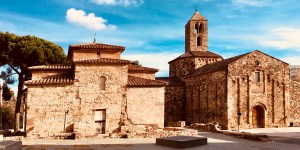Lenten Campaign 2025
This content is free of charge, as are all our articles.
Support us with a donation that is tax-deductible and enable us to continue to reach millions of readers.
Plainchant is also (somewhat mistakenly) known as Gregorian chant – the quintessential form of liturgical music in most Christian traditions. It is a monophonic, unaccompanied vocal music characterized by its simple yet sophisticated melodic nature. This ancient form of sacred music has a rich history and profound significance within Christian worship.
Plainchant’s origins can be traced back to the early days of Christianity, with its roots firmly planted in the traditions of the Roman Catholic Church. Some sources claimed the roots of Christian liturgical chant were to be found in ancient Jewish psalmodies, probably because of a passage in the Gospel of Matthew that explicitly says that during the Last Supper, hymns were sung:
“When they had sung a hymn, they went out to the Mount of Olives.” (Cf. Matt 26:30).
However, contemporary biblical scholars explain that most early Christian hymns were not using the Psalms as texts. Also, psalms were not sung in synagogues for centuries after the Second Temple was destroyed by the Romans in the year 70.
Pope Gregory I reigned from 590 to 604 AD. He is often attributed with organizing these chants – hence the alternative name “Gregorian chant.” However, it’s important to note that plainchant existed in various forms and regions before Gregory’s time. In fact, even if tradition credits Pope Gregory with inventing (or, at least, codifying) plainchant nowadays most scholars believe that this kind of monophonic psalmody is a musical development stemming from Carolingian, Roman, and Gallican liturgical chants.
Why monophonic?
One could say that the primary purpose of plainchant is to enhance the worship experience during liturgical ceremonies. Its monophonic structure, devoid of complex harmonies or instrumental accompaniment, serves to draw the focus of the congregation towards the sacred texts being chanted. The text, usually drawn from the Bible or liturgical prayers, takes center stage in plainchant, allowing worshippers to reflect on the words’ spiritual significance.
Plainchant is characterized by its modal melodies, which are often marked by fluid and free-flowing phrases. These melodies are specifically designed to match the cadence of the Latin texts (although there is also plainchant in Arabic, Greek, and other Mediterranean languages) creating a seamless integration of music and words. The use of plainchant varies throughout the liturgical calendar and the specific liturgical occasions. It can be found in Masses, the Divine Office (Liturgy of the Hours), and various other religious services.
One of the key features of plainchant is its adaptability to different liturgical settings. Different chants are used for specific parts of the Mass, such as the Kyrie, Gloria, Credo, Sanctus, and Agnus Dei, each conveying the mood and theological essence of the respective section. Beyond the Mass, plainchant is also employed in the chanting of Psalms and other biblical passages during the Liturgy of the Hours, providing a consistent melodic backdrop to daily prayer – thus fostering meditation and contemplation during the religious services.
Needless to say, plainchant has undergone modifications and regional variations throughout the centuries – as in the case of Visigothic chant, for example. Many schools of chant developed in different parts of Europe, resulting in diverse regional repertoires while maintaining the core principles of simplicity and reverence.










